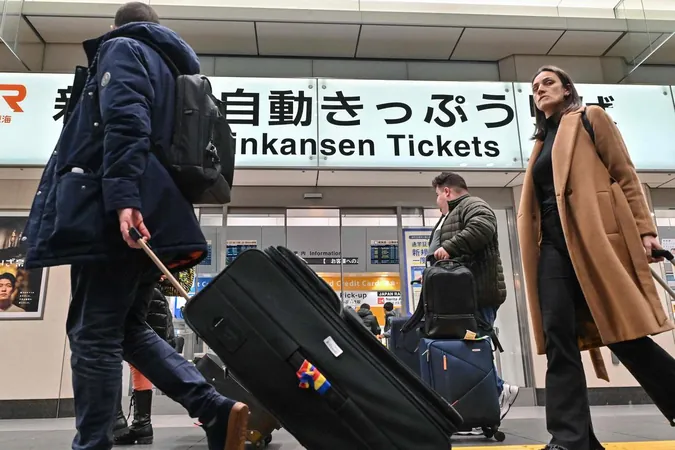
Bullet Train Services in Northeast Japan Resume After 8-Hour Disruption Due to Severe Weather
2025-03-26
Author: Rajesh
In a dramatic turn of events, Shinkansen bullet train services in northeastern Japan resumed on March 26 after an unexpected halt lasting more than eight hours. This disruption was caused by debris on overhead wires and exceptionally strong winds, ultimately impacting approximately 76,500 passengers, as reported by the train operator.
The trouble began around 9:15 AM local time at JR Fukushima Station when a 100-meter-long plastic string was discovered entangled in the overhead wire, disrupting bullet train operations between Tokyo and Sendai, located in Miyagi Prefecture. As the situation worsened, JR East extended the suspension area northward when anemometers recorded wind speeds reaching the maximum allowable limits defined by regulations, prompting them to prioritize passenger safety.
Finally, operations resumed shortly after 6 PM, bringing relief to stranded travelers who had faced significant delays throughout the day. The incident highlights recent trends in Shinkansen services, which, despite their sterling reputation for punctuality and efficiency, have seen a rise in interruptions due to various unforeseen circumstances.
Just a few weeks prior, another bullet train was forced to make an emergency stop after two of its cars uncoupled, leading to similar service suspensions. This trend signifies growing concerns over rail safety and operational reliability, especially given that JR East is the only operator to couple different train models for its Shinkansen services.
Adding to the day's turmoil, the Japan Meteorological Agency reported unprecedented wind speeds in Miyagi, with gusts reaching up to 126 km/h, the highest recorded since monitoring began in 2008. This extreme weather event serves as a reminder of the challenges faced by rail operators in maintaining service during inclement conditions.
Passengers and transportation authorities alike are left to wonder how these incidents will influence the future of Japan’s renowned bullet train system, as the focus shifts toward improving safety and ensuring such extended disruptions become a thing of the past.



 Brasil (PT)
Brasil (PT)
 Canada (EN)
Canada (EN)
 Chile (ES)
Chile (ES)
 Česko (CS)
Česko (CS)
 대한민국 (KO)
대한민국 (KO)
 España (ES)
España (ES)
 France (FR)
France (FR)
 Hong Kong (EN)
Hong Kong (EN)
 Italia (IT)
Italia (IT)
 日本 (JA)
日本 (JA)
 Magyarország (HU)
Magyarország (HU)
 Norge (NO)
Norge (NO)
 Polska (PL)
Polska (PL)
 Schweiz (DE)
Schweiz (DE)
 Singapore (EN)
Singapore (EN)
 Sverige (SV)
Sverige (SV)
 Suomi (FI)
Suomi (FI)
 Türkiye (TR)
Türkiye (TR)
 الإمارات العربية المتحدة (AR)
الإمارات العربية المتحدة (AR)